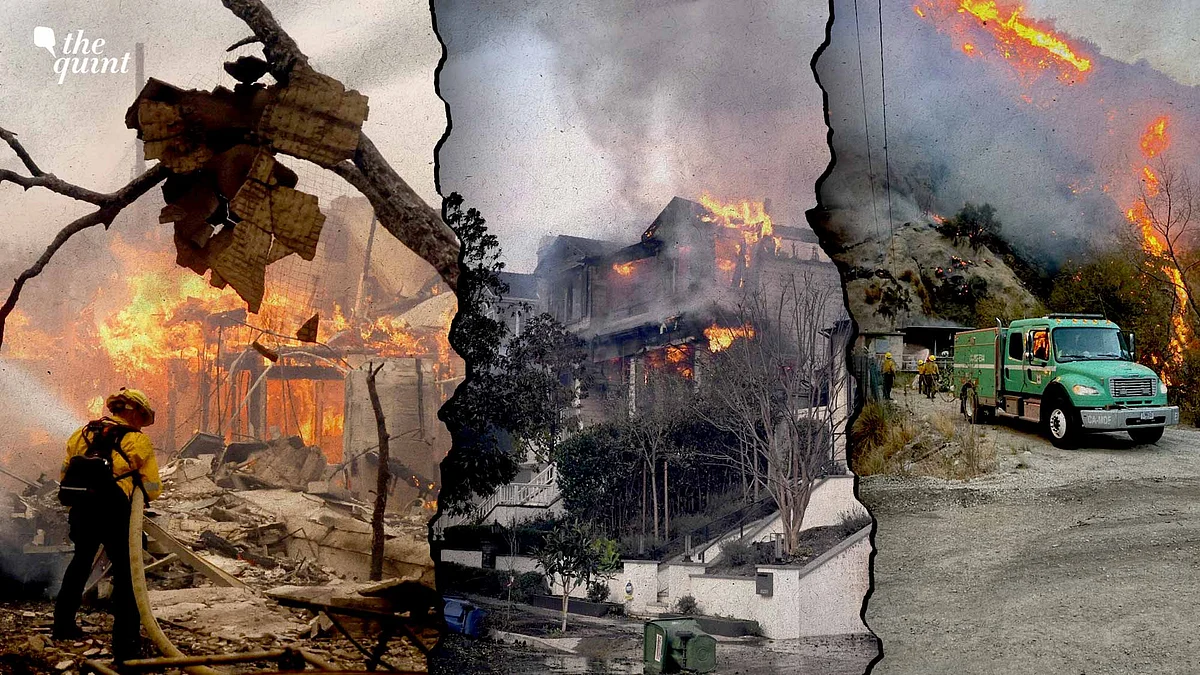Months After the Wildfire, Toxic Fallout Lingers in California Homes
Nine months after the Eaton Fire, the invisible fallout from smoke has rendered some surviving homes uninhabitable.

advertisement
The fires that tore through Los Angeles nine months ago didn't destroy Karen Girard's home. But the smokeleft her walls, floors and furniture infused with a toxic cocktail.
Tests have found heavy metals like lead, arsenic, and zinc, as well as volatile organic compounds like cyanide and furfural that have left her home uninhabitable.
When the flames razed neighbouring houses in January during a terrifying firestorm in Altadena, Girard was astonished to learn her property was spared.
"I thought I should go out and buy lottery tickets, because I never thought I would be this lucky again," she told AFP.
But even after only short visits, Girard finds herself suffering from increasing asthma attacks. Tests revealed problems she couldn't see—things she says mean the house is no longer safe.
This aerial view shows residential lots cleared after homes there were destroyed in the January 2025 Eaton Fire beside homes which are still standing, including the home of Karen Girard, in Altadena, California.
(Photo: AFP)
This aerial view taken August 20, 2025 shows residential lots cleared after homes there were destroyed in the January 2025 Eaton Fire beside homes which are still standing, among them the home of Karen Girard, in Altadena, California
(Photo: AFP)
Unseen Disaster
The wildfires that ravaged the Los Angeles area in January killed 31 people directly, and razed more than 16,000 buildings, tearing a swathe through the working- and middle-class neighbourhood of Altadena and the upmarket enclave of Pacific Palisades.
Horrifying pictures of a burned-out landscape were broadcast around the world, showing acres (hectares) of almost unimaginable devastation, in one of the most expensive natural disasters the world has ever seen.
But among the embers smouldered another, less-visible disaster: the pollution released when homes, cars, televisions, household goods and batteries burned.
Driven by gusts reaching 100 miles (160 kilometers) and hour, this poisonous soup seeped under neighbors' doors and through vents.
His team tested the atmosphere in affected communities this spring and found abnormal levels of hexavalent chromium, a carcinogen.
Nanoparticles could have been transported up to six miles, potentially affecting tens of thousands of people, he says. "They are so small that they're capable of penetrating the indoor environment with high efficiency."
"It's really important that people trying to move back into their homes have them properly remediated," adds Jerrett.
But getting insurance companies to pay up has proven complicated.
Girard says she is stuck in a battle between experts, with the damage restoration company she hired recommending replacing all her furniture, and even treating the frame of her house.
The firm hired by her insurance company, however, insists that a vacuum cleaner equipped with a filter to capture fine particles will be enough to make the place habitable.
Karen Girard wears a facemask as she stands inside her home that was spared by fire, but scarred by smoke, in Altadena, California.
(Photo: AFP)
Insurers
To Girard it seems like the company is prioritizing profit over her wellbeing.
"While it feels like business to them, it doesn't feel like business to me," she said.
Girard's insurer, Farmers, told AFP: "We continue to work with our customer to resolve this claim and remain willing to review any additional information they may wish to provide."
The problem when dealing with insurance companies—a frequent topic of complaint in high-cost California, even without a major disaster—is that they appear to be a law unto themselves, says Jane Lawton, founder of the Eaton Fire Residents United association.
"There are no clear standards on (smoke claims), so insurance companies can deny what they want," she said.
Her organization has mapped more than 200 tests conducted on homes in Altadena. All show varying degrees of contamination.
California's largest insurer, State Farm, which has so far paid out $4.5 billion in relation to the fires, said it "evaluates each claim, including smoke claims, on a case-by-case basis."
But for Priscilla Munoz, they are dragging their feet.
Munoz, who lives a mile from the disaster area, spent $10,000 on a study that found lead in her home and still doesn't know if the insurer will pay to clean it up.
"Lead... goes into things," she says, worrying about her two young children and their plush toys. "I don't want them snuggling up to a toxic stuffy."
(This article has been sourced from AFP.)